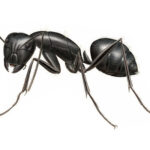
Carpenter Ants
Carpenter ants are medium to large black ants with yellow/orange hairs on their rear section, and three distinct body segments. They forage into buildings during warm weather looking for food and potential nesting sites. Carpenter ants will excavate wood to create a nest, especially when the structure has been affected by excess moisture. You may see an accumulation of sawdust containing ant parts, which indicates nesting activity.
In warm weather mature nests may produce winged reproductives, which will be attracted to light.
Treatment for carpenter ants will vary, depending on the location of the main nest.
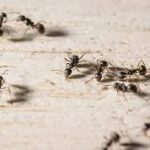
Small Ants
There are numerous species of small ants which will inhabit structures. The visible ants are responsible for locating food and bringing it back to the main colony. They will feed on a variety of substances, including crumbs, pet food, and sweets. Good sanitation practices are an important component in resolving a small ant issue, as well as proper identification of the species. These ants are most frequently controlled using gel baits.

German Cockroach
German cockroaches are the most frequently found roach in homes and businesses in the Northeast. They are about 5/8 inch long, brown in color, with 2 dark longitudinal stripes on their back. They can be transported from restaurants, markets, or infested residential dwellings. Kitchens and bathrooms are their likely harborages, although they will spread to other areas if left untreated. German roaches can transmit a variety of diseases, and are an issue for people with respiratory difficulties.

Bed Bugs
Likely the most objectionable insect we deal with, bed bugs are about 1/2 cm in length, and mahogany brown in color. They feed on humans when we are resting or sleeping, usually for about 5-10 minutes at a time. Bed bugs are most often introduced to our homes when we stay in infested buildings.They crawl into suitcases or backpacks, and hitchhike home with us. They will then move to box springs, bed frames, and couches. Proper identification is vital, in that customer preparation is extensive, and the treatment is quite involved.
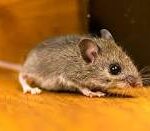
House Mice
One of the most frequent visitors in our structures, the house mouse is usually light to dark gray, and weighs about one ounce. A healthy female can produce 50-60 offspring per year, and young females are ready to breed 4-6 weeks after birth. They have adapted to indoor living quite successfully, and will eat a wide variety of our foods. House mice are generally nocturnal, and will spend a great deal of their waking hours searching for a meal. They not only damage our food supplies, but their droppings and urine carry numerous diseases. The house mouse can enter through a space as small as ¼ inch.
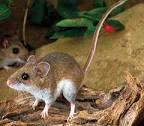
Deer Mice( White-Footed Mice)
Deer mice are most commonly found in homes that are adjacent to fields and wooded areas. They are somewhat less invasive than house mice, but will enter through the same type of access points, which can be as small as 1/4 inch. Tan with a white stomach area, these rodents are a serious issue because of their tendency to carry ticks which can transmit Lyme disease. They also can spread hantavirus through their droppings and urine.
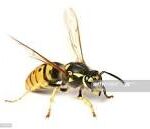
Wasps
This group of stinging insects is made up of numerous sub-sections. Commonly referred to as wasps, hornets, and yellow jackets, they will form paper nests in wall voids, behind shutters, holes in the ground. and hang them under eaves and tree limbs. Mud-dauber wasps gather damp soil and construct tube-like nests which are attached to protected areas on homes. These pests are generally fine if left alone, but become a problem because of their tendency to nest in close proximity to our living and recreation areas.
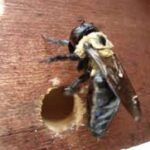
Carpenter Bees
These wood damaging bees resemble bumble bees, but are somewhat larger. The female will burrow into unfinished wood to create a nesting place for her offspring. Their activity is often characterized by sawdust-like material falling out of the nest. In addition, light to dark fecal deposits can often be seen on the shingles adjacent to their nesting entries. Carpenter bees can do considerable damage to trim boards over a period of years if left untreated.
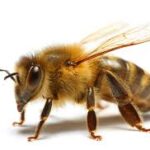
Honey Bees
Honey bees are one of the most important insects that we encounter. About 1/2 inch long, their outstanding characteristic is the fuzzy golden color of the rear section. Colonies can number in the tens of thousands, and are sometimes found in wall voids in homes and businesses. Their pollinating activities are an extremely important facet of agriculture and crop-bearing plants. This dictates our approach to honey bees, which always begins with an inspection to determine the appropriate measures to resolve the issue.
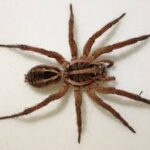
Spiders
Spiders are predators, so it is some consolation that they reduce the general insect population. They prefer to live in protected areas of structures, such as overhangs, crawl spaces and basements. Their presence can be detected by the skeletal remains of the insects they have captured, which accumulate below their nesting area. Control is usually a combination of web removal, and application of the appropriate materials.
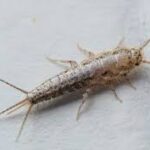
Silverfish
Silverfish are one of the most primitive insects that we encounter. As their name implies, they are a silver/gray color, and about 1/2 to 3/4 inches long. Their distinguishing characteristic is three tail-like appendages which protrude from the rear of the body. They like to feed on starches and moldy items, and can be seen in old stored books, as well as attics. In older homes, they will be found eating the glue behind wallpaper. They frequently drop out of the attic into upstairs rooms through vents and recessed lighting. Silverfish are also attracted to areas with excess moisture.

Rats
The rat population in our area has substantially increased over the past few years. This is due to abundant food sources and harborage areas. The Norway rat is the most common in the Northeast. They are usually brown in color, weigh 10-16 oz, and are about 16 inches long (including tail). Like mice, rats have adapted quite well to living in our structures and eating our food. They are burrowers by nature, and will create underground tunnels to live and raise their young. Their activity can be identified by baseball sized holes adjacent to foundations and under rocks, as well as accumulations of droppings. Sanitation and good housekeeping practices are critical in limiting food sources and nesting sites.
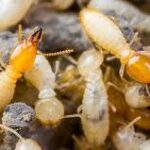
Termites
Subterranean termites are social insects whose main purpose in life is to locate dead wood and eat it. Unfortunately, this trait leads them into our homes and businesses, consuming the 2x4s and plywood used to build many structures. These termites cause hundreds of millions of dollars of damage every year, and can substantially weaken the structural integrity of a building.
Termite colonies are comprised of workers, soldiers, and a queen. In mature colonies, winged reproductives may be formed, and will emerge in the spring when the temperature rises, this may be the first and only sign of a termite infestation. These swarmers will drop their wings and attempt to get outside to begin a new colony after mating.
The worker termite is responsible for consuming wood or other cellulose-type material. They build mud tubes to protect them on their travels to and from the colony, and share what they have eaten with their mates.
A thorough inspection is critical in determining what type of treatment will be necessary.
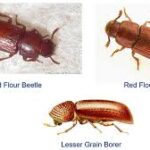
Stored Product Pests and Fabric Pests
These insects are often found in food that has made its way to the back of the shelf, or clothing that may be worn seasonally or infrequently.
Beetles: There are numerous types of beetles which will infest structures. The most common are carpet beetles and flour beetles. As their names imply, they have distinct preferences for what they consume. Carpet beetles will infest any wool or cotton products, including sweaters, suits, scarves, and of course, natural fiber carpets. They will also be found in carcasses of dead animals, eating feathers, hair, and fur. The flour beetle prefers grain products such as pasta, crackers, cereals, and pet foods. Both are brown, and are about 3mm long.
The list of additional beetles is extensive. Many will feed on a variety of food products in pantries and on shelves. These include the grain beetle, drugstore beetle, and cigarette beetle.
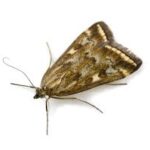
Moths
Like beetles, moths will consume a wide variety of food and fabric. Clothes moths and meal moths are most often responsible for infesting pantry products and clothing. The Indian meal moth will frequently be seen in grain products, nuts, chocolate, bird seed, and pet food. Their activity is accompanied by fine webbing in the items they have infested. The clothes moth prefers natural fibers such as cotton and wool. These pests are tan to dark brown, and measure about 1/2 inch.
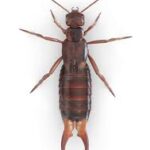
Earwigs
Earwigs are unique in appearance. They have pincer-like appendages on the rear of their body which is used for defense, and to capture prey. We find them nesting in cracks and crevices on the exterior of buildings, especially in damp areas. They will also congregate under stored items adjacent to foundations such as boards and stones. Earwigs are dark brown, and usually 1/2 to 1 inch in length.

Centipedes
Centipedes are a unique insect, defined by their multiple sets of legs, and quick, scurrying movements. They are yellow to dark brown, and will range in size from 1 to 2 inches. These nocturnal insects are found in basements, crawl spaces, and similarly damp areas. Centipedes prey on spiders, flies, and other insects unfortunate enough to wander into their territory. They will also live outside under decaying bark and vegetation.
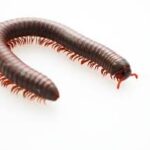
Millipedes
Millipedes are a worm-like insect with multiple legs which can be found adjacent to structures under decaying vegetation. They grow to about 1/2 inch, and are dark brown to black. We also see them on the perimeter of basements after they have dehydrated, often in a C shape. Centipedes prefer damp conditions, so a thorough exterior inspection to identify moisture is an important factor in control.

Ticks
The black-legged tick, or deer tick, is one of the most important pests we control. It is not an insect, but belongs to the same family as spiders. They are 1/8 inch long, oval, and reddish to dark brown. Found in tall grass and low shrubbery, they will transfer onto mice,
chipmunks, and other warm blooded creatures that brush against their hiding places. Humans will contact them while working in the yard or garden, at which point the tick will crawl into a secluded part of the body and begin feeding. Deer ticks are well known for their ability to transmit Lyme disease, encephalitis, and other illnesses. Reduction of harborage areas is a large part of successful control measures.

Fleas
Fleas are a small reddish brown parasite that prey on dogs, cats, wildlife, and humans. They are adept at jumping, so do not need direct contact to access their intended host. The cat flea is the most common type we encounter. In addition to causing skin rashes and allergic reactions in pets, they can transmit typhus to humans through infected rodents. Inspection and customer preparation are important first steps to insure a successful treatment.
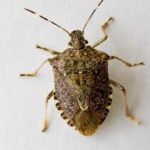
Stink Bugs
As their name indicates, the first line of defense for these insects is the odorous liquid they emit when threatened. They are tan to dark green, about a quarter of an inch long, and are shaped like a shield. Stink bugs enter homes in the late fall, and spend the winter in attics or void areas. In the spring, they leave their harborages and begin activity outside. Generally regarded as a nuisance pest to homeowners, they are harmful to fruit and vegetable crops due to their feeding habits.
